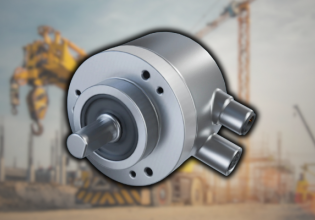Air Quality Considerations in Different Industries
See how air quality measurements are used in different industries to keep products and personnel safe while almost following important environmental standards.
Air quality measurements play a vital role in manufacturing industries. Not only do these measurements create acceptable environmental conditions for man, machine, and material, but they also protect the organization from the legal actions of relevant regulatory bodies. The key to a safe working environment comes from accurate measurements used for different environmental control procedures.
Manufacturing in today’s world must keep pace with the surge in demand. Different technologies such as materials, high-speed machines, and the latest research have made manufacturing faster than it was in the past. This requires proper quality control to improve as well. This article looks at air quality measurements in different industries, including pharmaceutical, cement, oil and gas, and food and beverage.
Air Quality Considerations in Different Industries
As we previously mentioned, industries have deployed air quality measurements to comply with the respective regulatory bodies for their product and to maintain a safe environment.
Pharmaceutical
Pharmaceutical products employ different chemicals from the manufacturing to the packaging stage. For the pharma industry, the environmental parameters are mainly chemical. Usually, the following parameters are measured.
Volatile Organic Compound (VOC)
The VOC compounds include ethanol or isopropyl alcohol. These are used in the different manufacturing processes of injectable and oral solid dosages (OSD) such as granulation, mixing, and blending.
Pharmaceutical processes use different volatile solvents. For example, in the granulation mixing and tablet coating of different materials.
Particulate Matter
Particulate sources in the pharmaceutical industry are a result of the processes involving chemical powders such as granulation, compression, and packaging.
Particulate levels are also measured to maintain area requirements for a different process because the process requires a dust-free environment free from particulates. They are also measured in clean rooms to ensure the filter system efficiency.

Figure 1. The pharmaceutical industry uses cleanrooms requiring particulate matter air quality measurements. Image courtesy of InsightAir.
Gas Emissions
Utility operations and fuel combustion in boilers and diesel generators cause the emission of gases such as carbon dioxide and carbon monoxide. These gases must be closely monitored.
Cement
Cement manufacturing is a complex process because it mixes various materials to form new compounds. The mixing and formation of new compounds result in different emissions, and to monitor these emissions, the following air quality measurement parameters are applied.

Figure 2. Cement manufacturing involves a variety of materials to form compounds, resulting in emissions that must be monitored.
Particulate Matter
Particulate matter is one of the major emissions in the cement industry. Particulate arises due to solid fuel, material transport, and manufacturing activities such as crushing, grinding, milling, and bagging.
Nitrogen Oxide
Nitrogen oxide emits during the heating of raw materials at high temperatures to form calcium silicates.
Carbon Dioxide and Carbon Monoxide
There is no direct source of carbon dioxide emission in the cement industry. The emission is mainly due to the burning of fuel for different activities such as chemical processes at high temperatures, electricity requirements, and utilities.
The main sources of carbon monoxide emissions are caused by the raw materials used in the mixing process.
Volatile Organic Compounds
VOCs include heavy materials such as lead and cadmium, generated as a result of different raw materials. VOCs consist of mercury as a result of different manufacturing processes.
Other emissions in the cement industry are polychlorinated dibenzodioxins (PCDDs), dibenzofurans (PCDFs), hydrogen fluoride (HF), and hydrogen chloride (HCl).
Oil and Gas
In the oil and gas industry, emissions are due to combustion for heat and energy sources, the use of engines for transport applications, and oil-well-related functions. Let's look at which measurements are beneficial in the oil and gas industry.

Figure 3. Oil and gas refineries must be closely monitored for air quality levels.
Carbon Dioxide
Carbon dioxide is produced as a result of fuel combustion to generate electricity and boiler applications — two potentially dangerous processes that must be closely monitored.
Pollutant Gases
Different pollutant gases such as nitrogen oxides (NOx), sulfur oxides (SOx), and carbon monoxide (CO).
Particulate Matter
Particulate matters are produced as a result of the related processes happening during production and are a major parameter to monitor. Monitoring helps to control pollution and also helps in process improvement, fault diagnosis, and fault prevention.
Volatile Organic Compounds
Oil and gas output produces VOCs due to the hydrocarbon nature of oil, gas, and related products. Air quality monitoring is essential for many reasons — mainly for environmental control.
Food and Beverage
In the food and beverage industry, the main source of emissions is different from manufacturing and process related steps. Utility operations such as boilers and electricity also produce emissions. Air is monitored for the following types of gases and elements.
Particulate Matter
The main source of emission in food and beverage production is particulate matter, due to solid handling and transport. The drying process of material also produces particulate matter.
Carbon Dioxide and Carbon Monoxide
Different energy sources such as boilers and power supplies are the main producers of carbon dioxide and carbon monoxide.
Conclusion
Air quality measurements for different industries such as manufacturing, energy, and utility services are useful in numerous ways. Accurate readings up to the micro-level are now possible due to the advances in measurement instruments. With these technologies, emissions are monitored and systems are able to track down micro-level components of emissions. This results in more environment control and process improvement.





